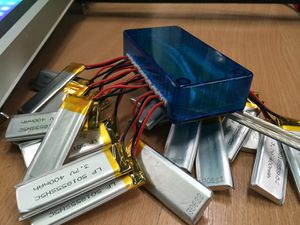Blinkenschild: Unterschied zwischen den Versionen
Keine Bearbeitungszusammenfassung |
Keine Bearbeitungszusammenfassung |
||
| Zeile 6: | Zeile 6: | ||
* consists of: | * consists of: | ||
** 15 pcs RGB-123 | ** 15 pcs RGB-123 | ||
** counts a total of 960 pixels | ** counts a total of 960 pixels (40x24) | ||
** a teensy 3.0 for control | ** a teensy 3.0 for control | ||
** a microsdcard reader interface | ** a microsdcard reader interface | ||
Version vom 15. März 2014, 21:27 Uhr
What
The Blinkenschild project
- is aportable sign
- consists of:
- 15 pcs RGB-123
- counts a total of 960 pixels (40x24)
- a teensy 3.0 for control
- a microsdcard reader interface
- a bluetooth module
How
960 individually addressable RGB pixels run DIRECTLY at 15 pcs 3.7-4.2V LiPo s in parallell (each 400mAh)
I had lots of those thats why.
Animations are generated with Glediator and saaved in the native glediator protocol
A frame starts with 0x01 and is followed by 960x3 bytes RGB data.
These information is saved in a single file via a nice hack involving socat to capture the serial data.
Glediator2 is GREAT software but unfortuneatly it is NOT open source, just free to use :((
The animations are on a microsdcard on a FAT15 filesystem read by the teensy 3.
There is an android app that lets you pick the animations over bluetooth and set a text and text colour for overlay and brightness for both animations and text.
This is done in realtime and pixelvalues are recalculated in realtime before display.
This is still too fast so i had to add 30 ms delay between the frames or we would not perceive it as a fluid animation but rather just blinking bright light.
Teensy 3.x is a GREAT MCU.
Why?
Because ist 2014 and we can.
And there are numerous reasons to bring the messages to the streets (with a blinky twist).
Who
Files
https://github.com/hackerspaceshop/Blinkenschild
Media
 |
 |
video soon..